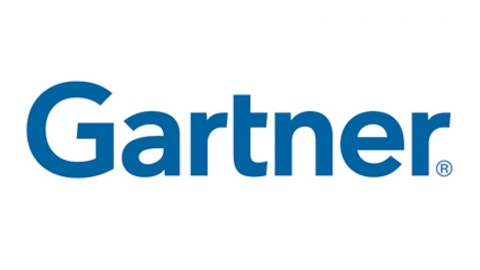Though I am definitely a value investing advocate, there are simply times when basic value concepts like fair value and margin of safety fail to provide useful conclusions in analysis. Case in point: the valuation of a fast-growing business like LinkedIn Corp (NYSE:LNKD). To illustrate, I’ll attempt to find LinkedIn’s fair value and its margin of safety.
Meteoric growth is hard to estimate
LinkedIn’s first-quarter revenue increased by 72% from the year-ago quarter. That’s impressive. Yet it presents a serious problem for value investors.
Value investors, of course, seek out the intrinsic value of a business. And forecasting growth rates for the business going forward is central to any valuation of an ongoing business. But LinkedIn Corp (NYSE:LNKD)’s current high growth rates make forecasting the next several years very difficult. High growth rates present investors with extremely high levels of uncertainty. Difficult questions arise: When will the decline in growth rates begin? To what degree will it unfold? The answers to these two questions will drastically affect valuation.
Sure, year-over-year revenue growth rates have topped 85% in each of the past three years, making LinkedIn Corp (NYSE:LNKD)’s high growth rates pretty consistent. But this doesn’t mean we can expect revenue to grow by exceptional rates over the next several years, or even next year for that matter.
For instance, in each of the last three years, Apple Inc. (NASDAQ:AAPL)‘s revenue and EPS year-over-year growth rates topped 44%. But in the trailing 12 months, EPS is up only 1.8% from the year before. Who could have seen that coming? Apple shares have fallen right along with growth rates, trading more than 40% lower than they were about nine months ago. Apple is no longer a growth stock. In fact, at today’s prices, it could make an excellent value investing candidate or even be considered a worthy dividend stock.
What is LinkedIn worth?
Ignoring the notion that growth stocks are tough to value, let’s give LinkedIn Corp (NYSE:LNKD) a proper shot at a valuation.
Consider two different scenarios. In Scenario A, LinkedIn manages to increase free cash flow by 50% next year, followed by growth rates that decelerate by about 10% annually for the next nine years.
| Year | Growth Rate |
|---|---|
| 1 | 50% |
| 2 | 45% |
| 3 | 40.5% |
| 4 | 36.5% |
| 5 | 32.8% |
| 6 | 29.5% |
| 7 | 26.6% |
| 8 | 23.9% |
| 9 | 21.5% |
| 10 | 19.4% |
Given these assumptions, a discounted cash flow valuation yields a fair value of about $197 for LinkedIn Corp (NYSE:LNKD) shares, giving shares about an 11% margin of safety at today’s price around $177.
But in Scenario B, things don’t go quite as well. Free cash flow growth rates decelerate by 15% every year.
| Year | Growth Rate |
|---|---|
| 1 | 50% |
| 2 | 42.5% |
| 3 | 36.1% |
| 4 | 30.7% |
| 5 | 26.1% |
| 6 | 22.2% |
| 7 | 18.9% |
| 8 | 16% |
| 9 | 13.6% |
| 10 | 11.6% |
This scenario also seems realistic. Yet now investors face a conundrum. If a scenario like this unfolds, a better estimate of the fair value of LinkedIn Corp (NYSE:LNKD)’s shares is $132, based on a discounted cash flow valuation. In other words, shares would be about 33% overvalued at today’s price.
We could also explore a Scenario C, in which growth rates in excess of 40% are sustained for more than five years. In this case, LinkedIn shares would be grossly undervalued.
Herein lies the problem with applying the concepts of value investing to stocks like LinkedIn Corp (NYSE:LNKD). Slight changes in estimated growth rates for these fast-growing companies present an uncomfortably wide range of fair value estimates, leaving value investors with nothing more than a headache.
Another approach
So does this mean stocks like LinkedIn Corp (NYSE:LNKD) do not make the grade as an investment? Not necessarily. Another way to add some context to the stock is to look at the company’s addressable market.
LinkedIn’s largest operating segment, recruiting, accounts for about 57% of revenue. And fortunately for investors, the segment is plush with opportunity. There’s an estimated field of 200,000 corporate clients, and only about 18,000 use LinkedIn Corp (NYSE:LNKD). Its recruiting segment already appears to be on a path of massive market share gains, with the segment’s revenue up 80% in the first quarter of 2013 from the year-ago quarter.
In other words, LinkedIn’s addressable market is huge.
Be flexible
Does LinkedIn’s huge addressable market imply the stock is undervalued? No, but it does present a new way to look at its opportunities.






